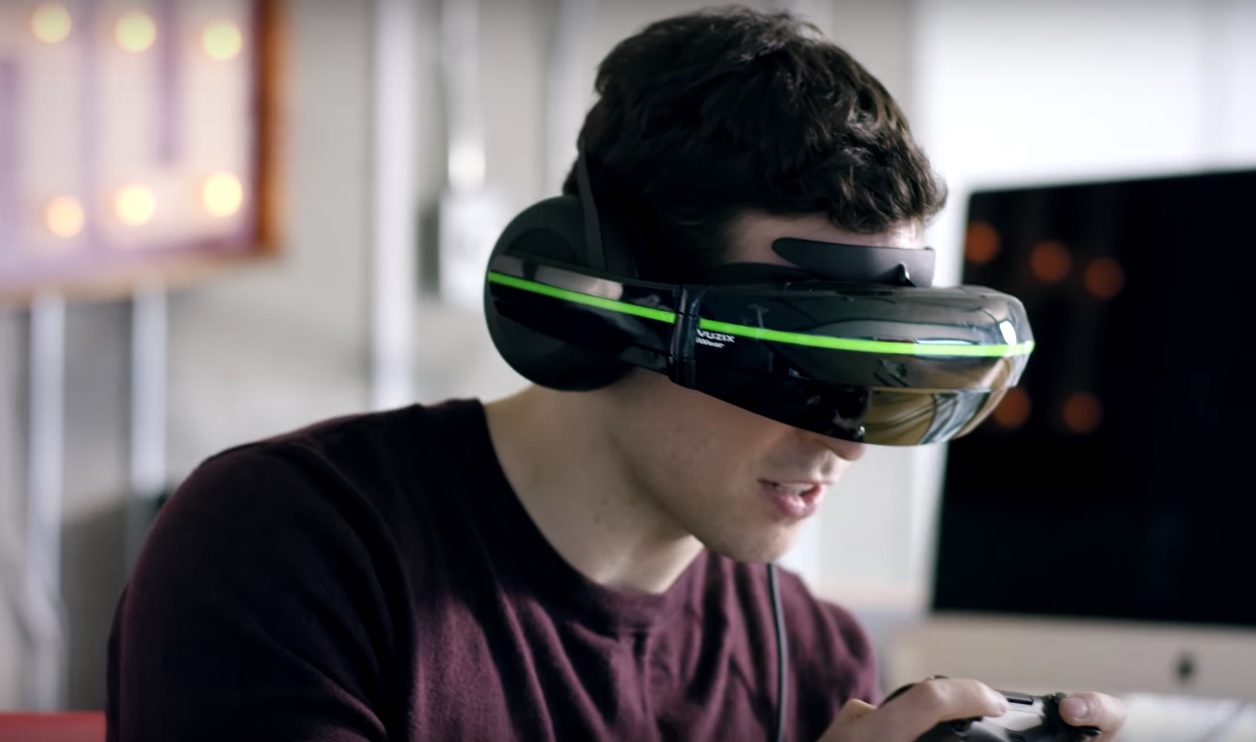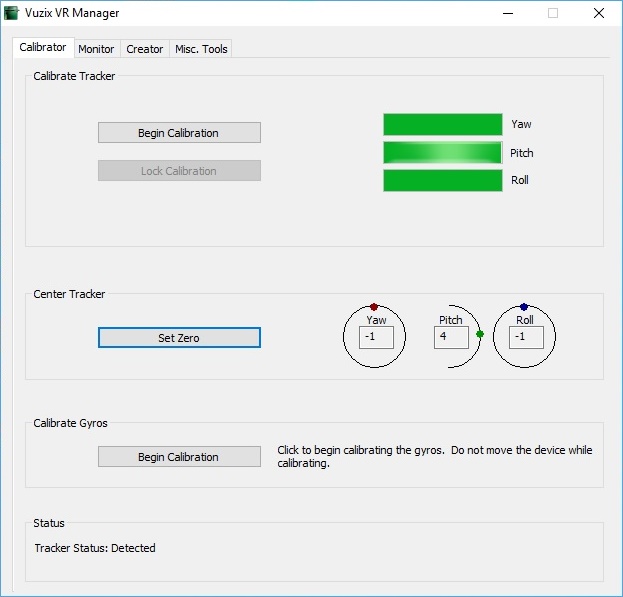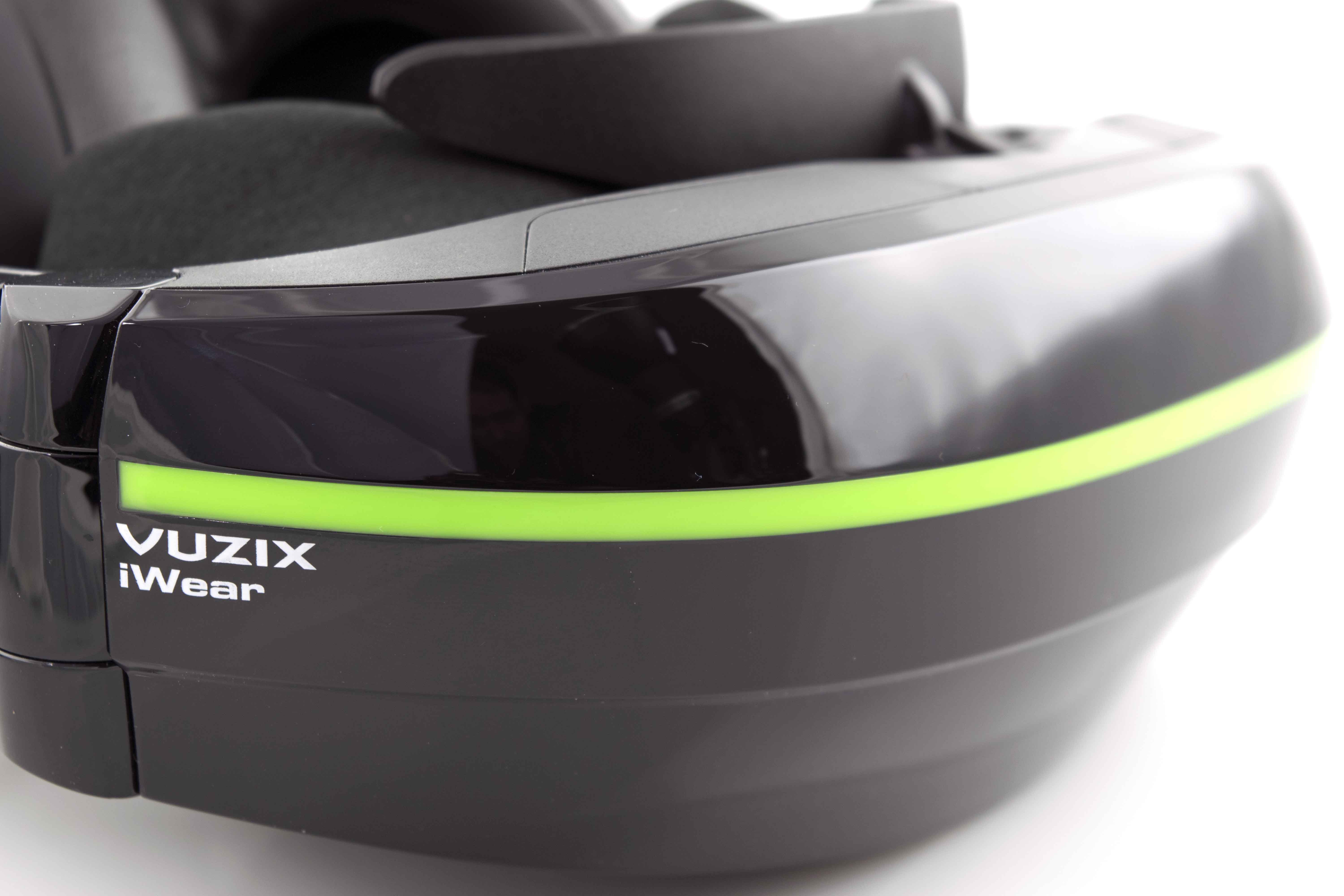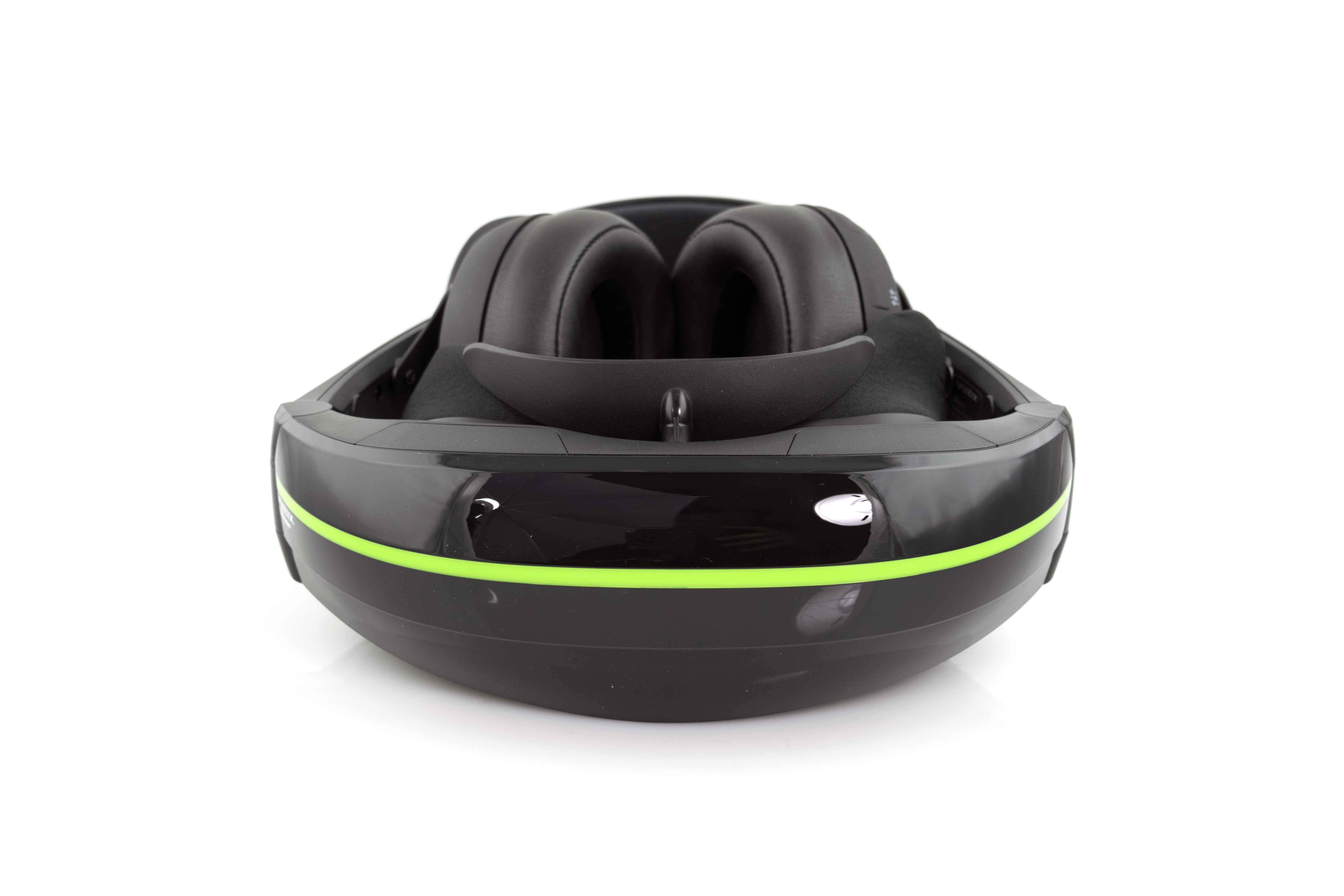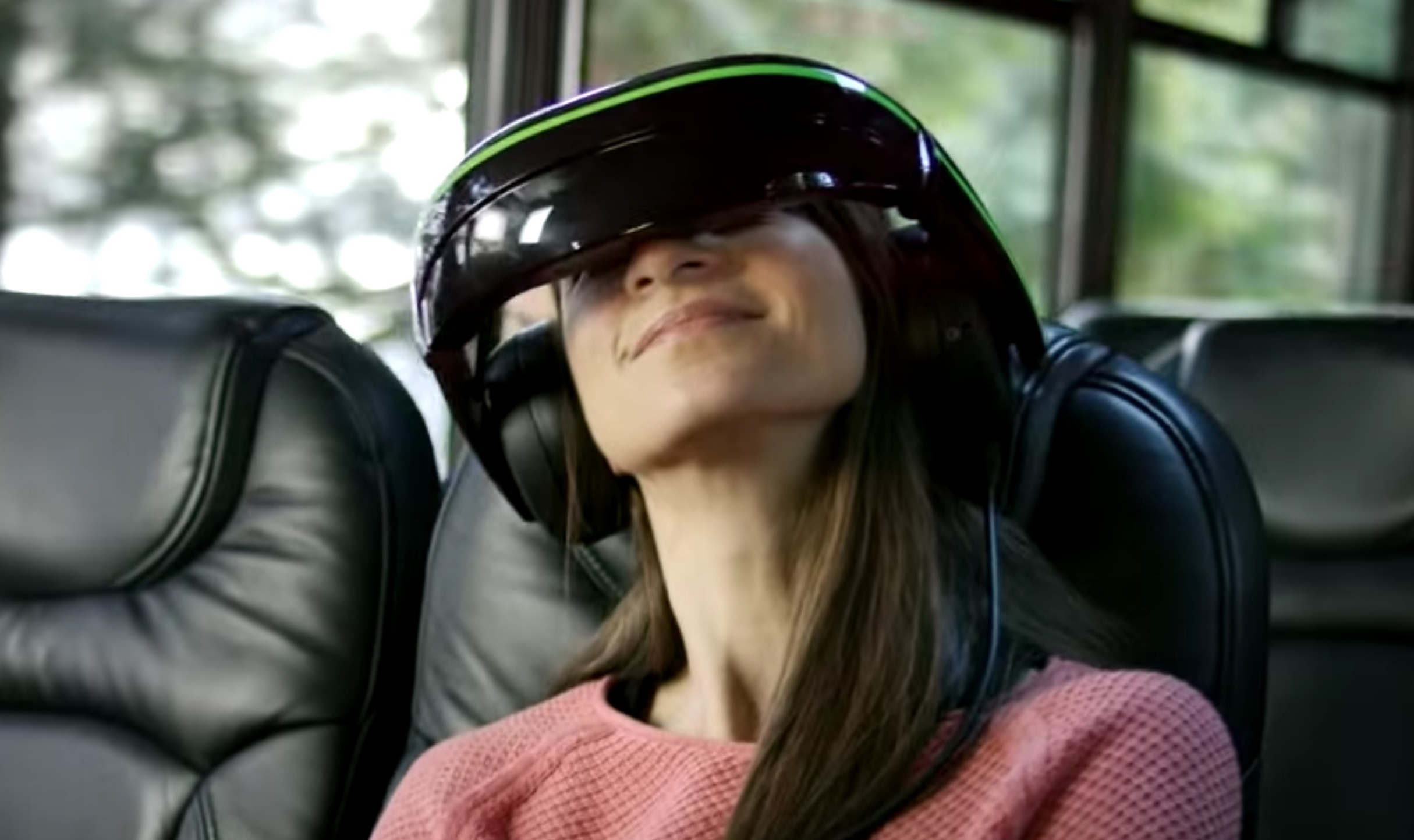The Vuzix iWear VR HMD, Hands On: A Home Movie Theater On Your Face
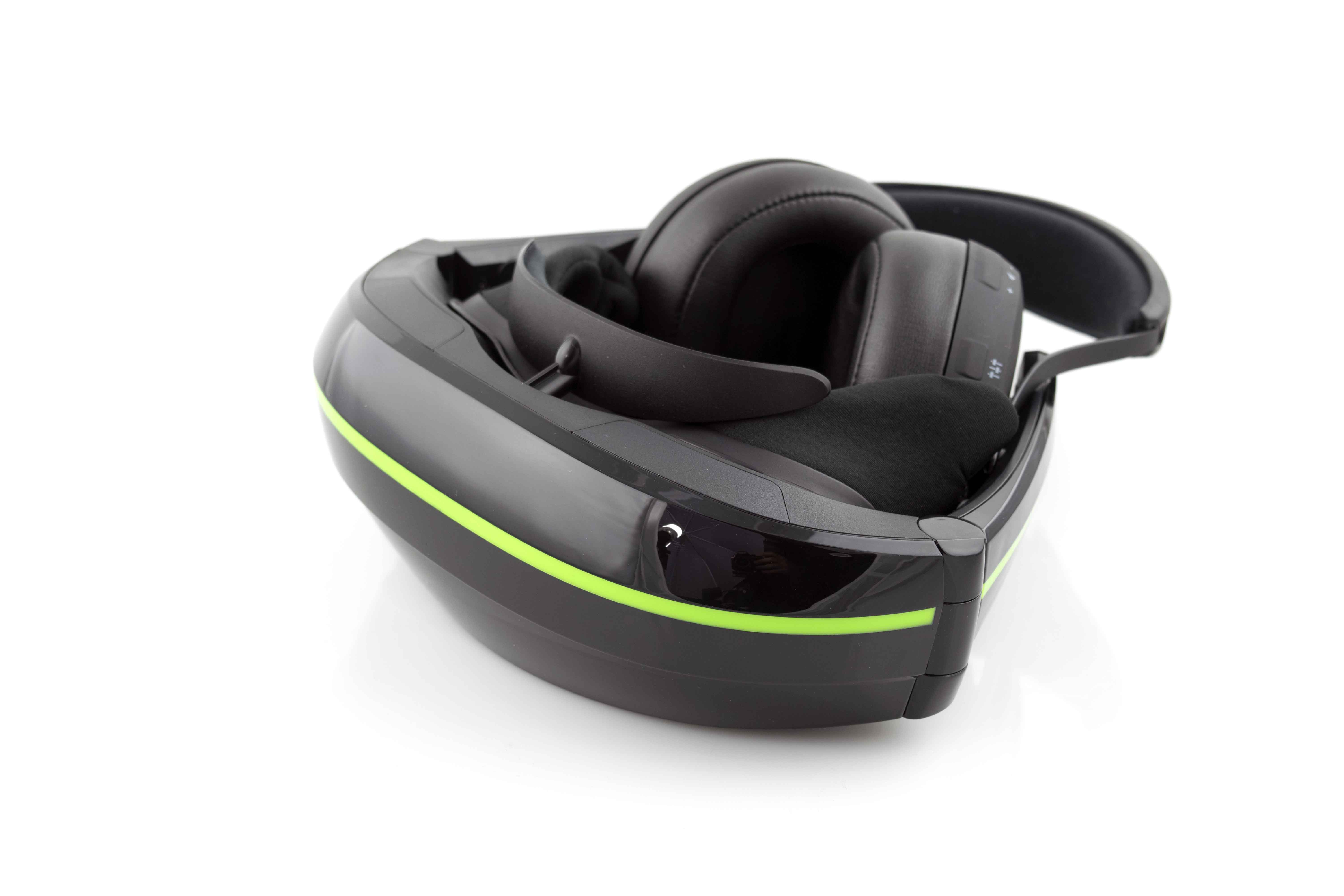

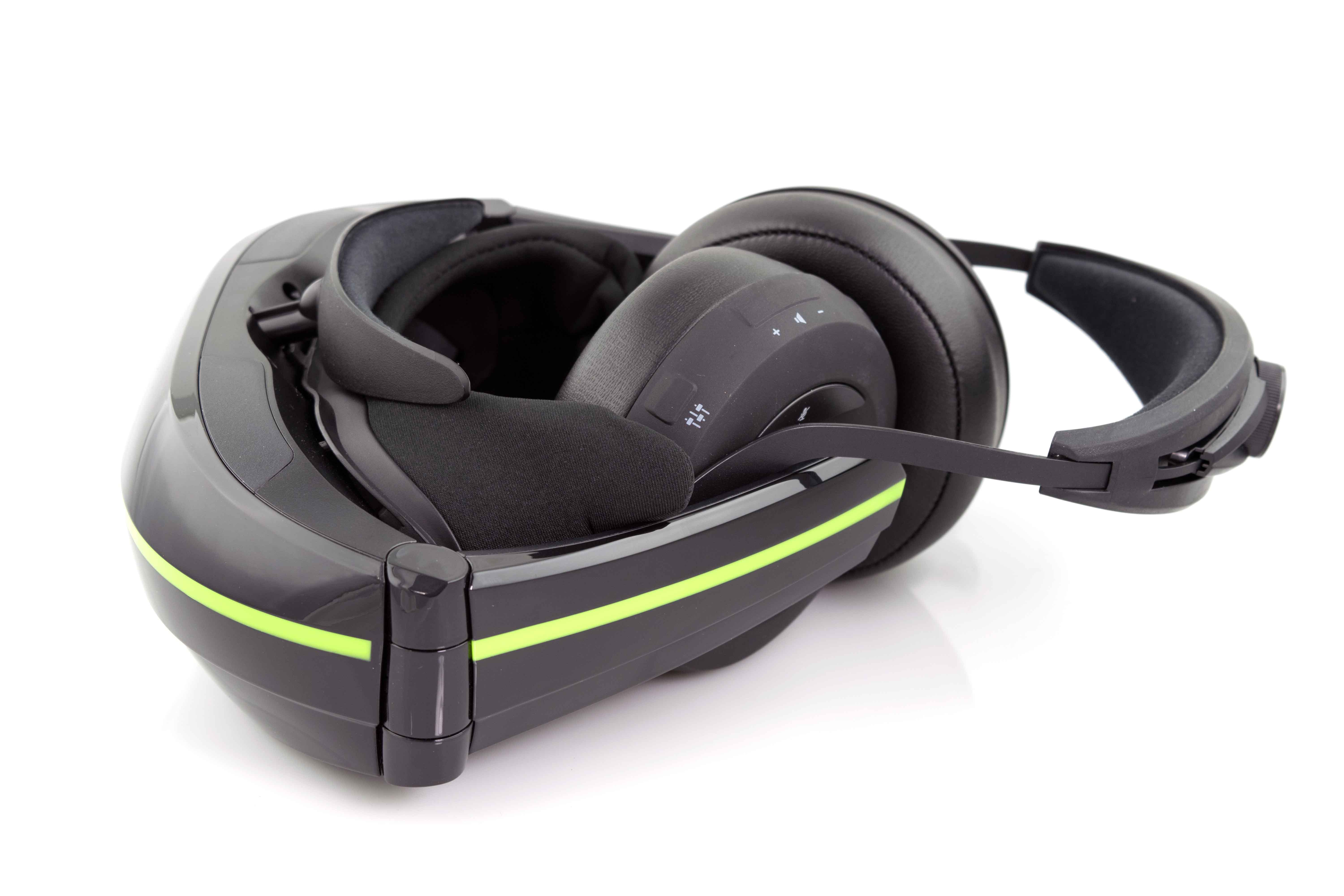
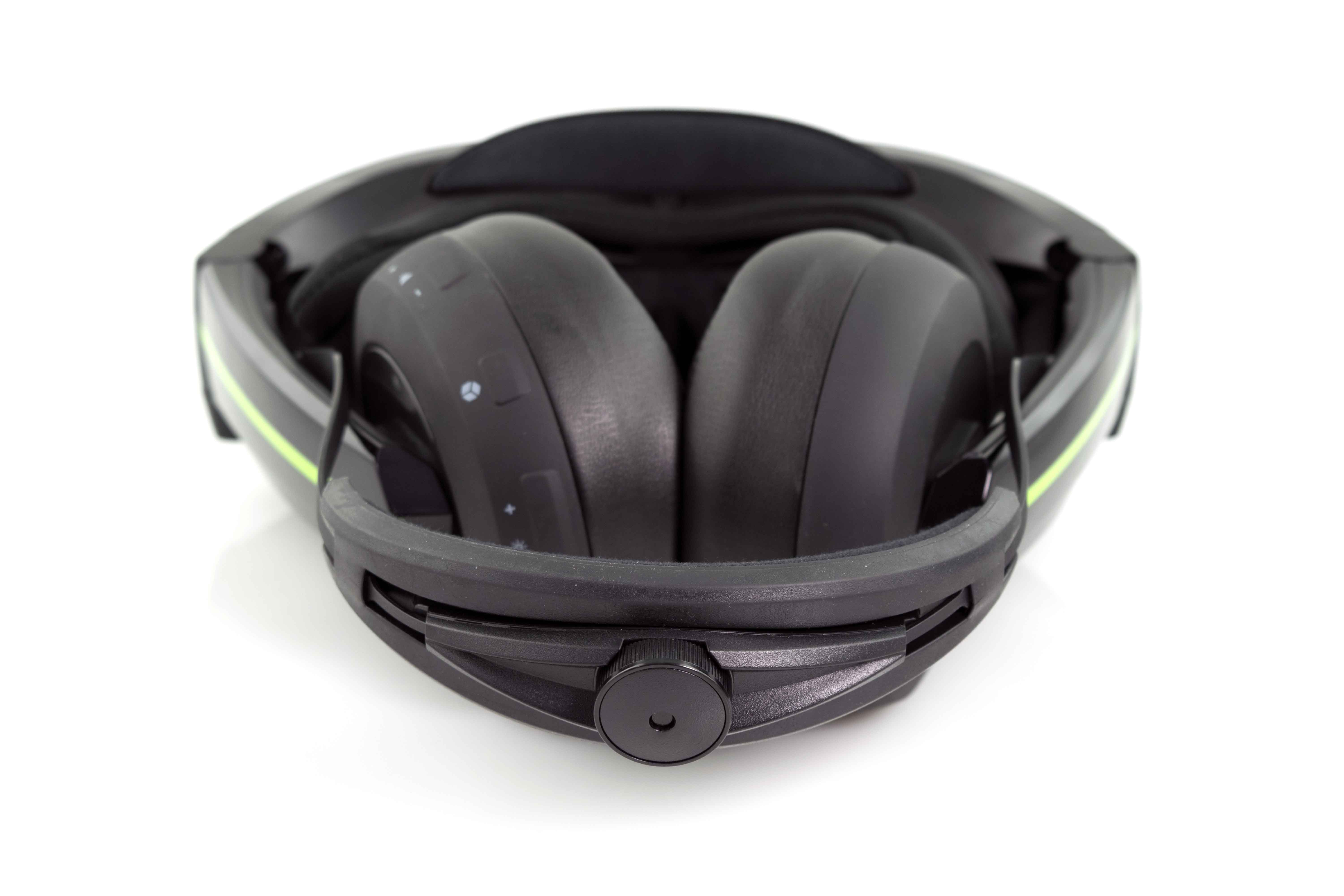
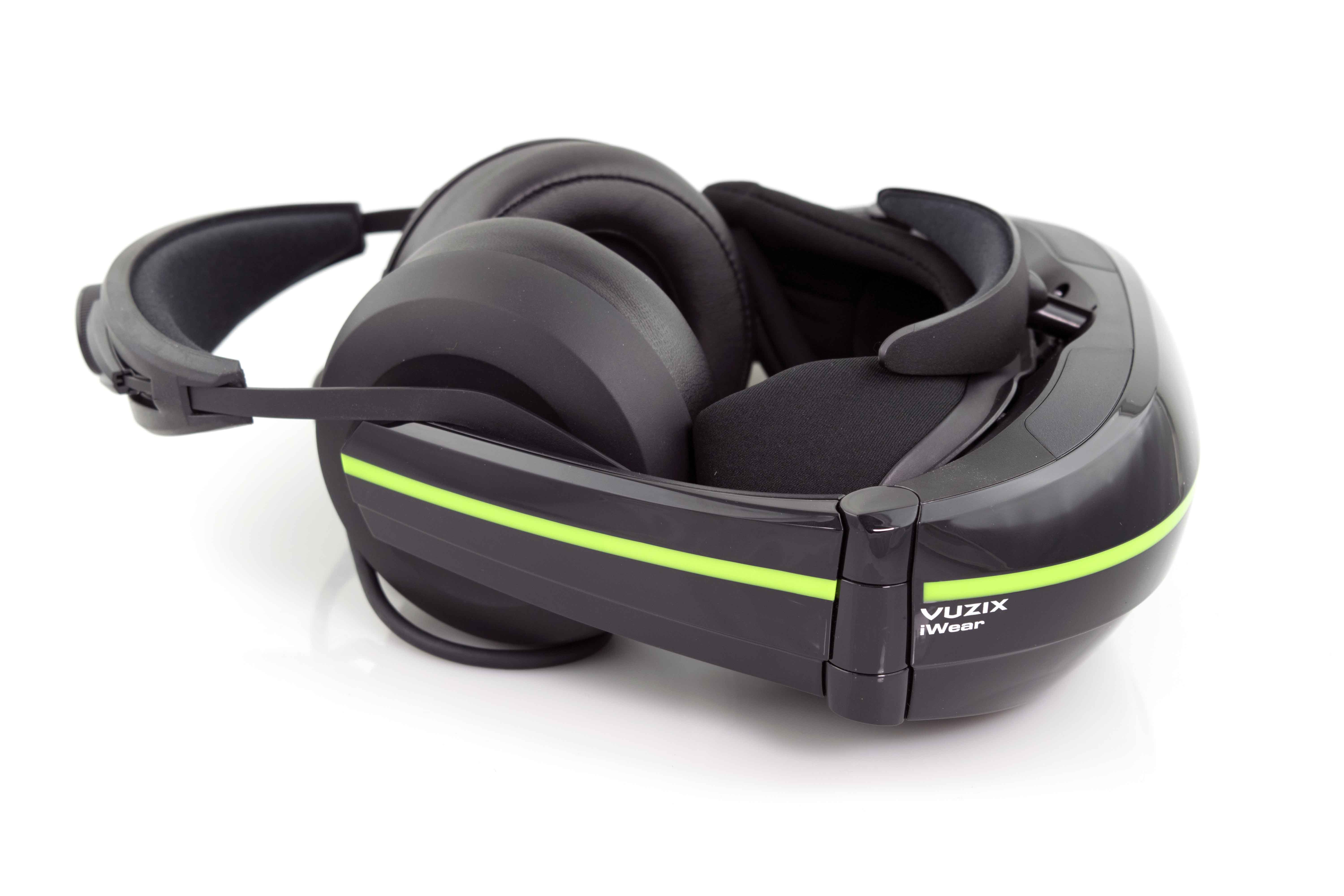
Virtual reality (VR) head-mounted displays (HMDs) have been available for a few months now, with the HTC Vive and the Oculus Rift leading the charge of the new era of technology. Devices such as the OSVR HDK and the OpenVR standard give developers a means of creating new and innovative devices, applications and experiences, but VR is also available to mainstream mobile users with products like Samsung’s GearVR and Google Cardboard. This is not to mention what Intel and Microsoft are up to.
The landscape of VR HMDs is broad and varied.
The Vuzix iWear HMD falls into a gray area (of sorts) in the existing VR ecosystem and borrows many similar features from many of the aforementioned devices. Vuzix describes the iWear as “video headphones,” but it’s as close to the definition of a head-mounted display as you can get: It’s a dual-display headset that acts as a monitor for any device that sports an HDMI port (including mobile phones, gaming consoles, laptops, and desktop PCs), without a minimum system requirement or special software.
Further piquing our interest, the Vuzix iWear is built for both 2D and 3D content and dabbles in the realm of VR with support for SteamVR (or anything using the OpenVR standard) and limited positional tracking via gyros, accelerometers, and even magnetic sensors, likening it to a mobile-based VR solution in terms of its functionality. However, SteamVR compatibility exposes the iWear to a whole different ecosystem of applications and experiences that go beyond the limits of mobile-based VR devices.
After a brief demo in New York City, we were left wanting more. We were particularly curious as to how it would perform with SteamVR, so we got our hands on an iWear HMD and tested it out.
In The Box
The Vuzix iWear comes packed in a sleek box, but it doesn’t have many additional peripherals or accessories. The detachable display shroud is designed to block out ambient light. There’s also an AC adapter (with multiple plugs for various countries) and a felt carrying bag. The bag itself sports a zippered pocket that you can use to store the adapter. The manual is a single-page illustration that points to plug-and-play connectivity, and the safety and warranty booklet warns of possible motion sickness, disorientation, and eye strain, similar to other HMDs.
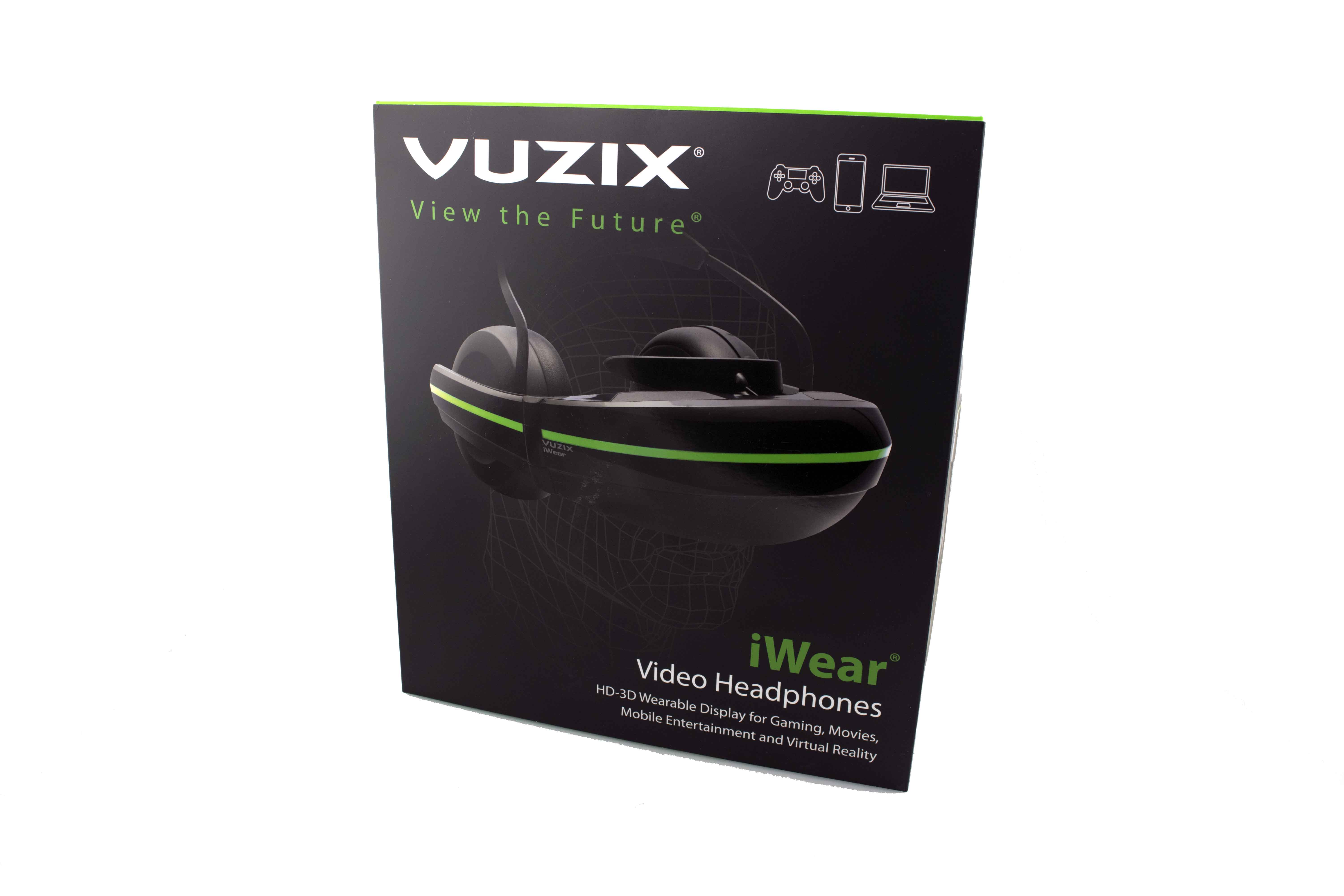
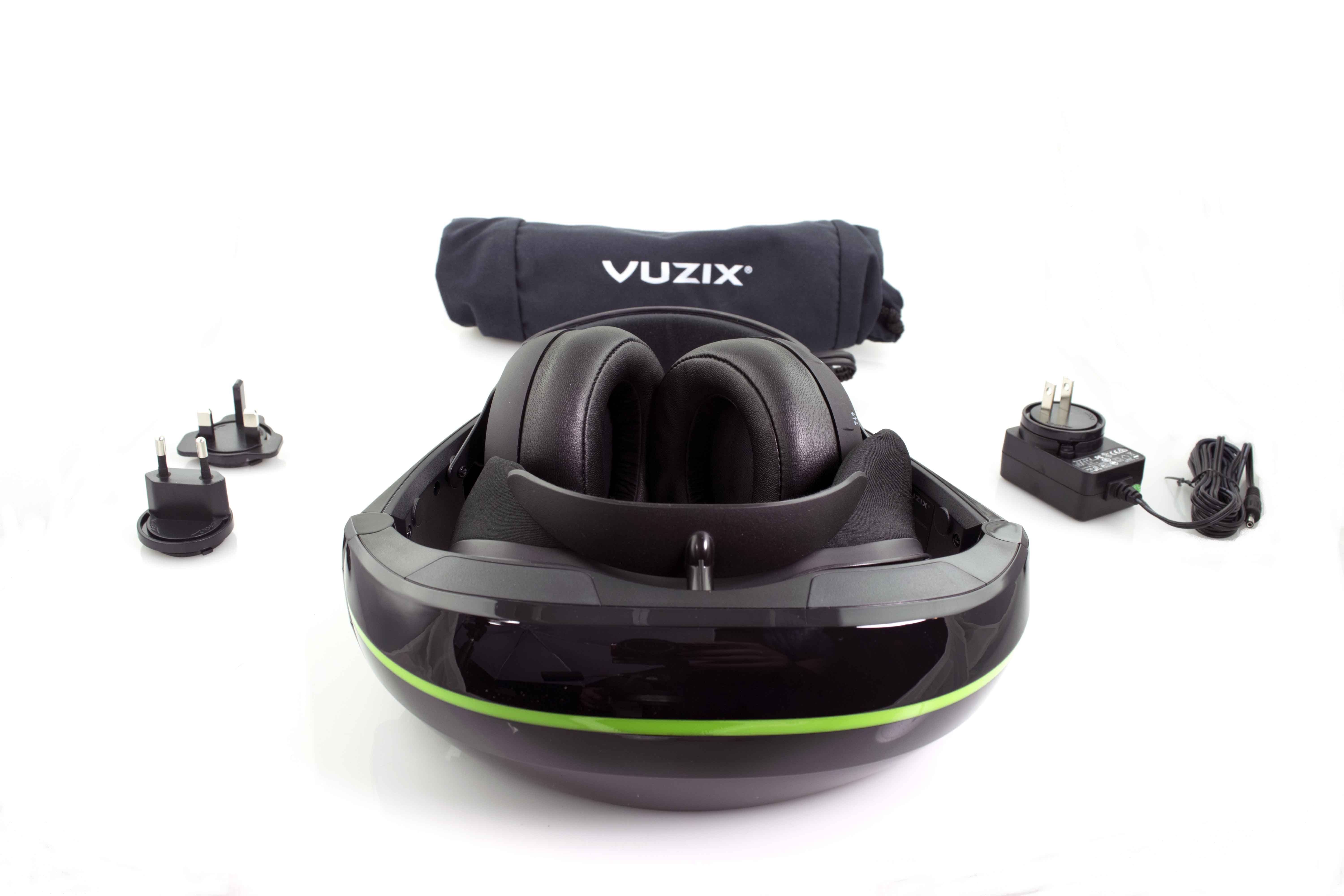
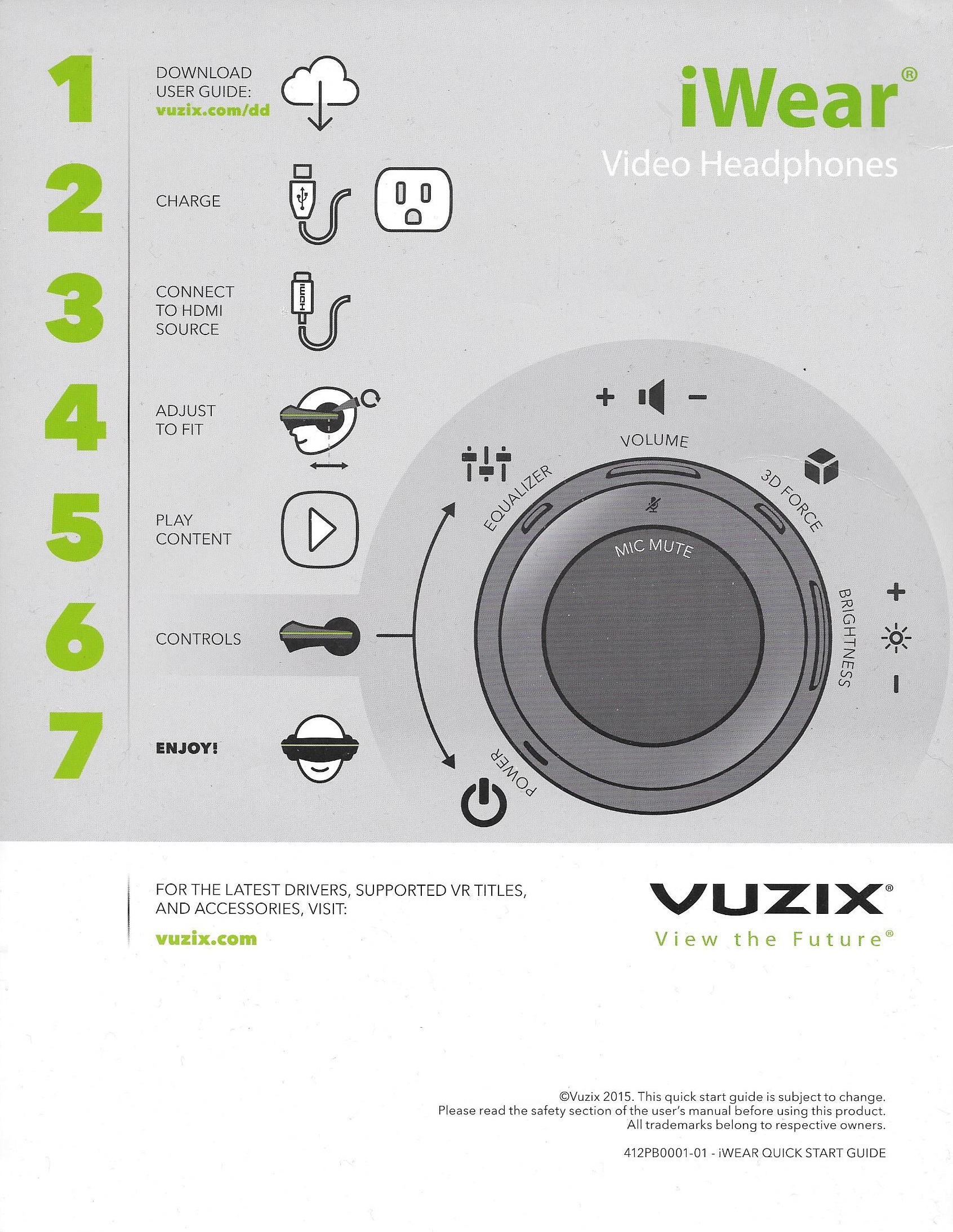
Hardware Specifications
The Vuzix iWear features twin HD displays (1280x720) with an aspect ratio of 16:9, which is uncommon for VR HMDs (the Vive and Rift both sport dual 1080x1200 displays). It offers a 55-degree field of view (FOV), 24-bit color (16 million colors), and 3D video support (side-by-side, over-under, and frame packed). The iWear’s FOV and resolution is considerably different than that of more expensive VR HMDs, so it will be interesting to see how these specs impact the overall experience (and specifically, VR applications).
Get Tom's Hardware's best news and in-depth reviews, straight to your inbox.
Audio is provided by two 40mm drivers with a 5-25,000Hz frequency response and 100 dB/mW sensitivity. The headphones, which extend from the front of the device, can be adjusted to different lengths to fit each user. The left earphone features buttons to adjust the screen brightness, audio equalization, and volume. There’s also a 3D Force button that can be used in certain applications to enable 3D vision. The overhead strap is designed to take the weight off the front of your face.

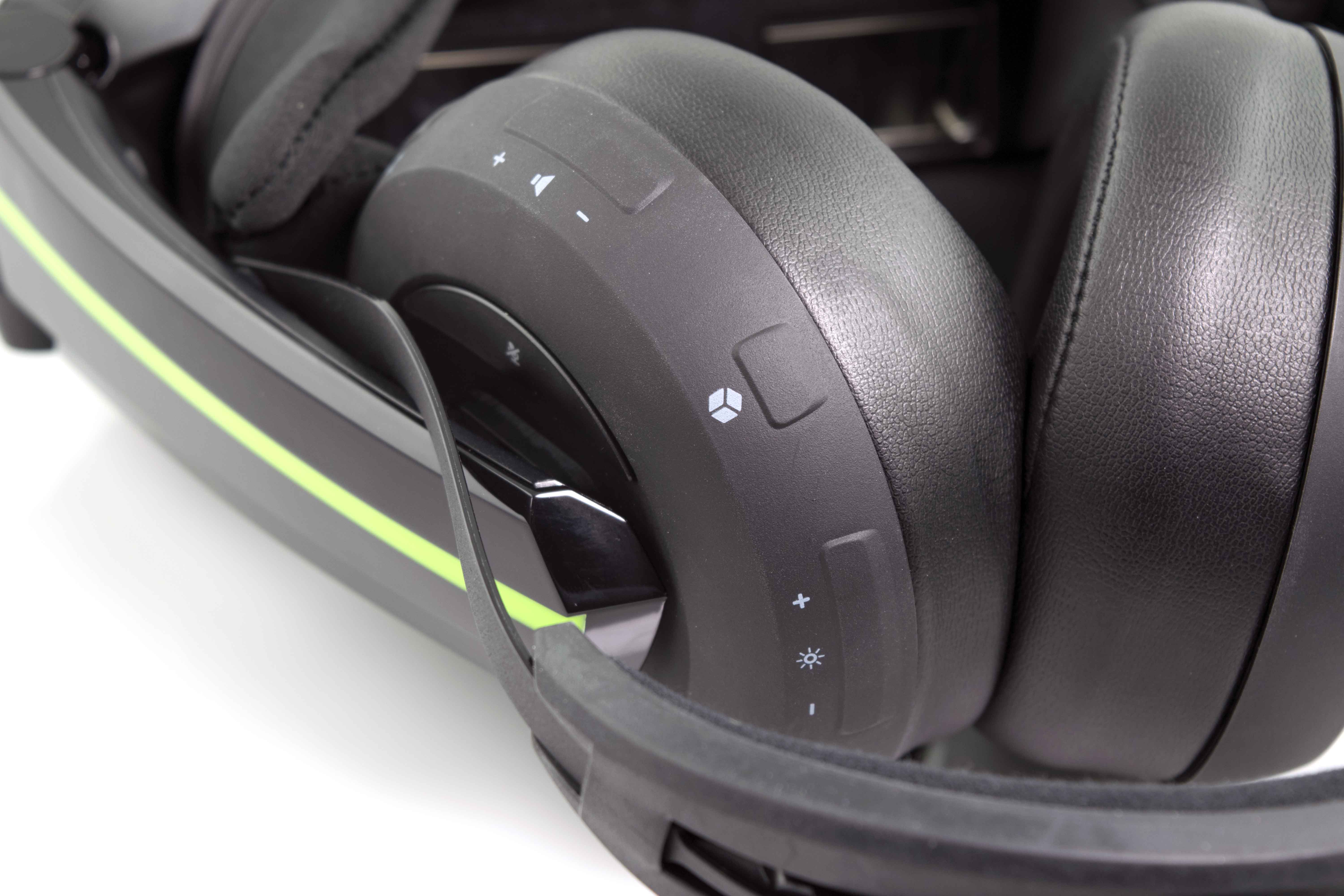
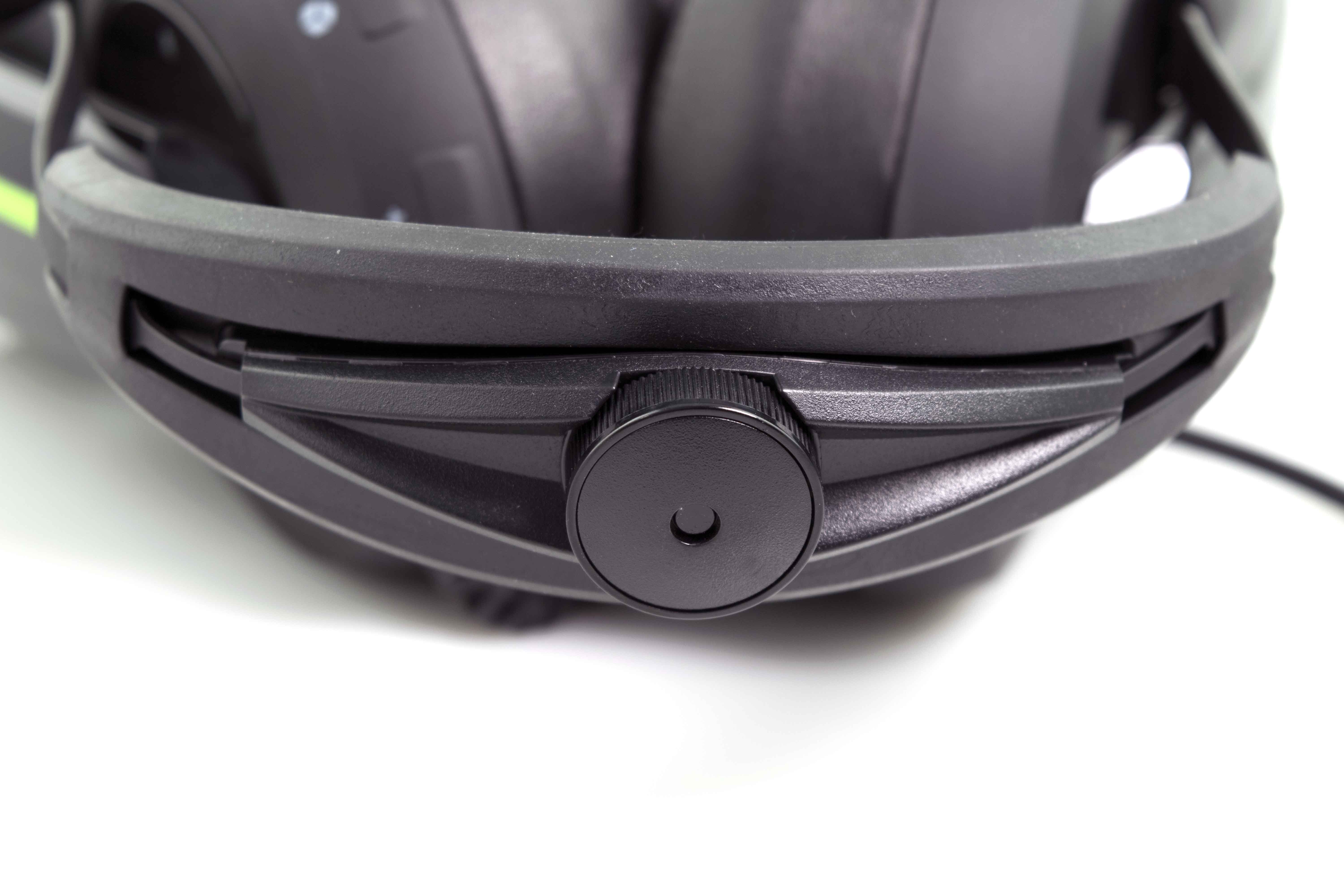
The Vuzix iWear is battery powered, making it better suited for mobile usage than any of the full-blown VR HMDs on the market that require a wired power source. Vuzix estimates up to three hours of runtime for the iWear with video playback (about the length of a movie and then some), with up to 10 hours of use with audio only. Continuous playback can be achieved by plugging in the USB cable into a powered USB port (or battery pack) with at least 1 amp of power or more.
Mostly Plug & Play
Connecting the iWear to your device is as simple as finding an HDMI port. The USB plug is used to charge the onboard battery, so you don’t have to connect it in order to use the device. However, if you want to use the iWear for extended periods, connecting to a USB port with more than 1 amp of power will keep the headset running off of the attached device’s juice.
Mobile phones can use adapters to connect to the full-sized HDMI plug, and of course most any modern PC features HDMI. For consoles, the iWear takes over as the screen, eliminating the need for a TV altogether. You can also use it in this fashion on a PC by disabling or disconnecting the primary display.
Depending on the device you are attaching it to, the setup procedure of the iWear can be different. However, the Vuzix iWear is mostly a plug-and-play device. Advanced features including positional tracking, 3D gaming, and VR, require a little more work (and patience), but most basic devices should instantly see a connection after you power up the headset for the first time.
Wear And Tear (Up)
Wearing the device was not an enjoyable experience. It could be argued that my head is physically too large to fit comfortably into any headset (though I have no issue with the Vive or Rift), but my personal experience with the iWear was particularly uncomfortable. The detachable display shroud would get bunched up under my eye sockets when I put on the headset, and I’d have to reach a finger uncomfortably close to my eye to pull the fabric down to its intended fit. Even then, there was still light bleed that affected the experience. After fidgeting with it for a little while, I decided to detach it and deal with the glare and reflective ghosts I’d occasionally spot. Using it in a dark room helped these issues.
I found that the headset was more comfortable (and practical) without the shroud; with it installed, it was difficult to use a keyboard and mouse while using the device (even with my mad home-row typing skills). With the shroud gone, I was able to glance down and see the keyboard and mouse, and this seems like the most logical route for anyone connecting their iWear to a PC of any kind.
The headset would occasionally slip down, and the head rest would block the very top edge of the display. The rear strap alleviated much of the weight from the front of my face, but getting the device in a comfortable viewing position took some work, and there was a palpable amount of pressure on my face once I arrived on an acceptable viewing position. It could just be my colossal cranium, but it remained fairly awkward to use throughout my testing.
Start At The (Desk) Top
I started off by using my personal VR-ready mini-ITX system (featuring an Intel Core i7-4790K, 16GB of RAM, and an Nvidia GTX 980Ti) to test the Vuzix iWear. Almost immediately, it’s clear that the iWear, ergonomically, favors mobile devices over traditional desktop systems. The length of the display and USB cables makes it difficult to stray far from the back of your PC. A set of extension cables is an absolute must. Even so, I was able to sit comfortably (although very upright) at my desk while wearing the device, which was attached to a PC resting on the floor.
After plugging in the HMD, the Nvidia driver immediate recognized the display and switched to an extended desktop mode, which was somewhat annoying to deal with when I attempted to run content (depending on the application, it wouldn’t display in the correct device). Using the Vuzix iWear by itself (as a replacement to the traditional display) circumvented issues of this nature, but it also complicated testing SteamVR applications (don’t worry, we’ll get to that).
The Setup (You Need This)
The Vuzix VR Manager is the company’s calibration software, and you'll need it to use the iWear for any VR applications. The tracking is calibrated by twisting the HMD around to get the device’s range of motion. You simply keep turning the iWear until the green bars for each axis fill up, and then you click the button to lock in the setting. You calibrate the gyros by placing the headset on a stable surface and not moving it at all.
There are presets for several popular game titles in the VR Manager, including World of Warcraft, Team Fortress 2, and more. The same download page contains the all-important SteamVR Plugin, which you have to enable before attempting to run any VR content (we’re getting to it, I promise).
iWear As A VR Device
The iWear can be used as a VR HMD, albeit with several caveats. First and foremost, the host system must meet the minimum requirements of the VR applications you want to run. In the case of SteamVR, most apps are developed with a minimum requirement of an Nvidia GeForce GTX 970 or AMD equivalent, and iWear users shouldn’t expect to be able to run SteamVR games with a weaker, non VR-ready PC, although it may be possible to do so (similar to the OSVR HDK).
Second, the iWear will work only with certain games and applications. Vuzix uses the OpenVR standard, so SteamVR is a suitable testing ground for the iWear's VR capabilities. Room-scale experiences, for the most part, won’t be accessible, and even some seated VR titles (such as Virtual Desktop) are downright incompatible. To navigate and control any of the SteamVR games and apps that are compatible, you will need your own gaming controller. An Xbox controller for Windows will do.
We were able to launch a few different titles, but we found that the selection and playability was limited compared to the likes of the HTC Vive. This didn’t surprise us given the price difference, but several noticeable kinks contributed to the device’s lackluster VR playability.
We could not get SteamVR to work with just the iWear plugged in, but connecting a primary, regular display (and fiddling with the Windows display settings) made it so that we could view the application on the proper device. The screen position in some titles would often reset if you turned too far to one side, and launching any game would cause screen flicker and audible static in the headphones until the game initialized. The audio static persists if there isn’t any sound running to the device, regardless of which platform we tested with.
The visual experience was comparable to the OSVR HDK, but it's not as immersive and enjoyable as the Vive or Rift. The iWear does produce a 3D image, but the screen door effect (that most HMDs have) is difficult to look past at first, possibly due to the odd resolution/aspect ratio. Furthermore, the display’s 60Hz refresh rate made some fast-paced titles, including the SteamVR version of Gunjack, nauseating. The resolution was satisfactory enough (and quite enjoyable when used as just a display), but this shouldn’t be considered a contender for best VR headset anytime soon.
What Is Your Primary Function?
The Vuzix iWear is best suited as a personal mobile home theater, and when that’s the task at hand, it’s a delightful device. We tested the iWear with various mobile products, including a Lenovo 100S and an Asus gaming laptop with a GTX 960M, and the experience wasn’t any different between the two notebooks despite the vast disparity in their respective capabilities.
The Intel Graphics driver in the Atom-based notebook instantly configured the iWear to clone the primary display with no tweaking required (unlike the desktop and Asus laptop with an Nvidia GPU). The primary display of the laptop can also be disabled to give you privacy, and you can run the iWear on its battery for a few hours without needing to plug it into a wall. You can also keep the iWear going with the USB cable at the expense of your mobile device's battery life, if it has a powered port.
Gaming is also highly enjoyable, so long as the device can feed the framerate. Don’t expect the iWear to let you play Assassin’s Creed: Syndicate at ultra settings on a PC such as the Lenovo 100S, but it will handle games as well as its host system can. This applies to consoles, as well. The 3D capabilities extend to 3D Blu-ray movies and some PC games, and the iWear can even be used as a first-person viewing device for certain drones with onboard cameras, putting you in the driver's seat. However, the iWear is best described as a home theater system on your face.
Conclusion
The Vuzix iWear is marketed as video headphones, and that’s exactly what you get: an HMD video screen attached to headphones. The primary function of the device is to be a portable home theater experience for mobile devices, and it pulls that off exceedingly well. Idle static aside, the headphones provided a tangible 3D audio experience with crisp highs, heavy lows, and a balanced midrange. The display is vibrant and clear, with rich color saturation and brightness.
Comfort may be an issue for some with the iWear, as I personally had difficulties finding a suitable viewing position with the headset. When I did finally settle on the fit, the pressure on my head was annoying, although not painful. The eye shroud was uncomfortable to use, and it wasn't particularly effective in blocking out light. Removing the shroud made for a more comfortable (for me) experience and made using the keyboard and mouse much easier, but the added reflective glare was difficult to deal with in a brightly-lit room. However, in a dark room, the shroud-free iWear shines without the pesky glare and reflections.
VR applications are hit or miss on the iWear. Fast-paced game titles had a considerable nausea factor due to the limited FOV, lackluster resolution, and refresh rate of the device. Comparing the iWear to a high-end VR HMD wouldn’t be fair, unless the company was claiming to be a suitable alternative to a Rift or a Vive (which it isn’t). In that respect, we can forgive the lack of deeper VR playability, but we highly advise anyone hoping to use it specifically as such on a desktop PC to step up to an Oculus Rift for only $100 more, or seek out the OSVR Hacker Developer kit, which actually costs less than the iWear.
That brings us to the price. At $500, the iWear costs nearly as much as the Rift, but it can’t offer a comparable seamless and visually immersive experience. It’s hard to justify the cost when you place the iWear on the VR HMD scale. Comparatively, the OSVR (which is, again, cheaper) could be considered a more capable HMD. If VR gaming is the goal, $500 for the iWear is a tough pill to swallow.
However, the iWear’s portability is the real star of the show. Its design lends it well to mobile applications, and the value of such a device isn’t so much how well it can do, but rather how much it can do. The iWear covers a broader spectrum of devices than any of the current leading HMDs or mobile VR devices (GearVR, Google Cardboard) on the market.
Even after testing the iWear, it’s difficult to indemnify it to one particular segment. It’s a jack-of-all-trades device that does a little bit of everything, some of it fairly well. The iWear can be used with anything sporting an HDMI output--any PC, smartphone, tablet, Blu-ray player, laptop, or gaming console. Few HMDs can (or attempt to) cover that much of the device market, so the Vuzix iWear stands out as a leader in that respect.
If you’re looking for an HMD that can keep the action right in front of you whether you're mobile or parked at your desk, you can order the Vuzix iWear at the company’s website for $500.
Derek Forrest was a contributing freelance writer for Tom's Hardware. He covered hardware news and reviews, focusing on gaming desktops and laptops.
-
Jeff Fx >with up to 10 hours of use with audio only.Reply
I'll bet it lasts even longer if you turn off the audio too. No one is going to cover their eyes to listen to music.
The photo of a model having her nose crushed by this thing doesn't look promising either. -
turkey3_scratch Any type of pressure on my head I don't like; I bent my headphones out of shape just to reduce the pressure.Reply -
computerguy72 55 degree FOV??? Somebody needs to welcome Vuzix to 2010. Perhaps in another 10 years they will almost equal what is readily available today.Reply -
etaxdoa have had the previous generation Wrap product from Vuzix, and subsequently a rift DK2...I primarily used both to keep proficient in flight simulators. the screen door effect on the dk2 was unacceptable, even the previous product from Vuzix had better resolution and gauges were easier to read. head tracking was hit n miss on the vuzix and needed constant resetting. The rift may have a bigger field of view but the pixels are hence spread across a larger field of view, hence the screen door.Reply
I now own the vuzix iWear, waiting for improved resolution from second generation rifts/vive/etc. Each product has it's niche markets and for now for flight sim'ing the vuzix is the way to go.
Different Strokes for different folks... and Vuzix, mtbs3d and the like is where P.Lucky really got his start

